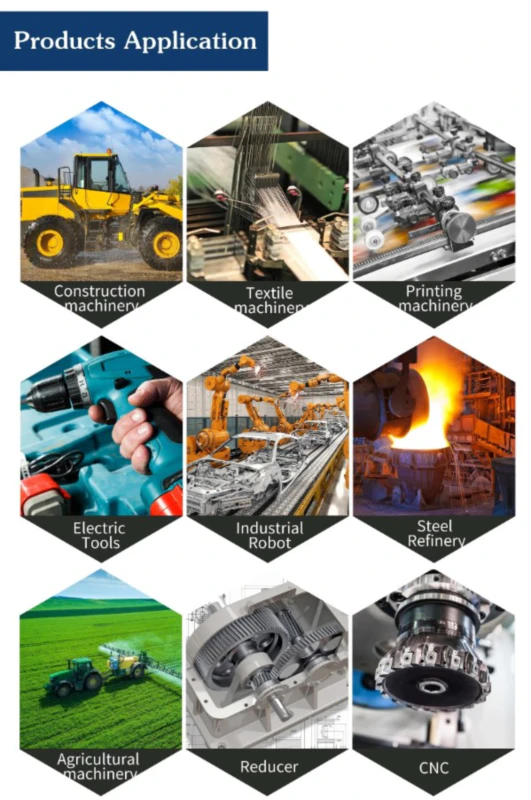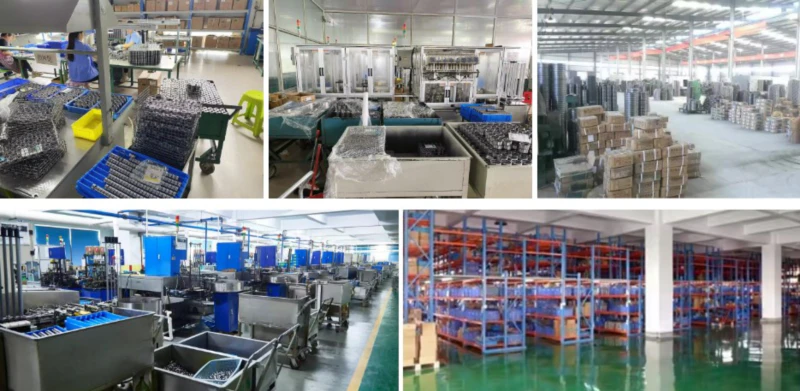Track Bearings Bearing Failure Pattern Analysis
Introduction
Track bearings are an essential component in various industrial applications, providing support and facilitating smooth movement in track systems. However, like any other mechanical component, track bearings are prone to failure over time. In this article, we will delve into the different failure patterns of track bearings, analyzing the causes and potential solutions for each type of failure.
1. Abrasive Wear
Abrasive wear is a common type of failure in track bearings, often caused by the presence of contaminants in the operating environment. These contaminants can include dust, dirt, or other particulate matter that infiltrates the bearing system. The abrasive particles create frictional forces that gradually wear down the bearing surfaces, leading to increased clearance and reduced performance.
2. Fatigue Failure
Fatigue failure occurs when track bearings are subjected to cyclic loading, causing the material to undergo repeated stress cycles. Over time, this cyclic loading weakens the bearing structure, resulting in cracks and ultimately, failure. Factors such as heavy loads, inadequate lubrication, and improper installation can accelerate the onset of fatigue failure in track bearings.
3. Corrosion
Corrosion is another significant cause of track bearing failure, particularly in environments with high levels of moisture or chemical exposure. When track bearings are exposed to corrosive substances, such as water or acidic compounds, the protective layers on the bearing surfaces can deteriorate. This leads to pitting, rusting, and eventual failure of the bearing.
4. Overheating
Overheating is a critical issue that can impact the performance and lifespan of track bearings. Excessive heat can be generated due to factors such as inadequate lubrication, excessive loads, or high-speed operations. When a bearing overheats, the lubricant may degrade, leading to increased friction and wear. Additionally, high temperatures can cause the bearing material to expand, leading to premature failure.
5. Misalignment
Misalignment occurs when the track bearings are not properly aligned with the track system or adjacent components. This misalignment can result from installation errors or external factors such as vibrations or thermal expansion. When track bearings experience misalignment, uneven loads are applied to the bearing surfaces, causing excessive stress and potential failure.
Conclusion
In conclusion, track bearings can fail due to various factors, including abrasive wear, fatigue, corrosion, overheating, and misalignment. Understanding these failure patterns is crucial for implementing effective maintenance strategies and improving the overall reliability of track systems. By addressing the root causes and utilizing high-quality track bearings, industries can enhance productivity, minimize downtime, and ensure optimal performance in their operations.

About Our Company
We are a leading company in the Chinese reducer market, specializing in the manufacturing of various high-quality products. Our product range includes servo reducers, plastic gearboxes, gear motors, worm gearboxes, worm wheels, and worm reducers, among others. With state-of-the-art automatic CNC production and assembly equipment, we ensure precision and efficiency in every product we deliver.
At our company, we take pride in our commitment to providing top-notch products, competitive prices, and excellent customer service. We welcome customers to customize their orders based on their specific requirements. With our dedication to quality and customer satisfaction, we strive to be your preferred partner in the industry.

Author: Czh